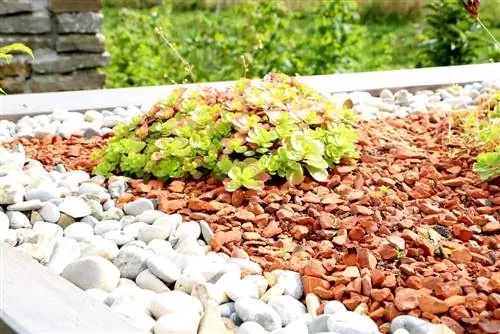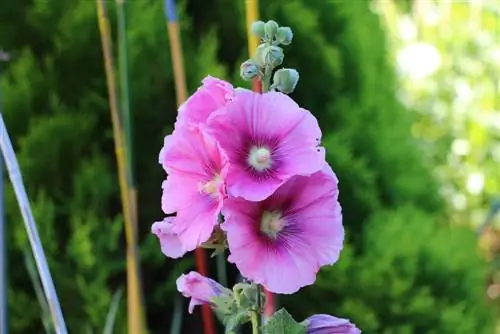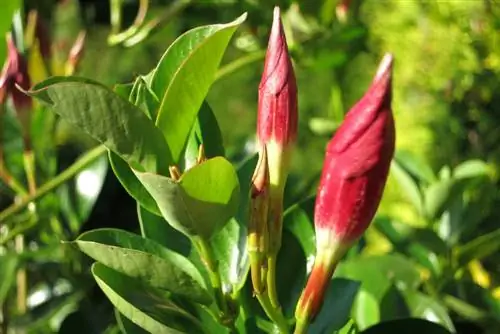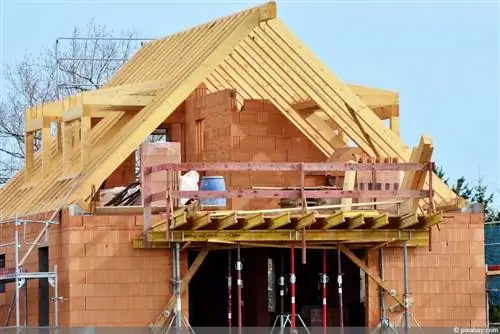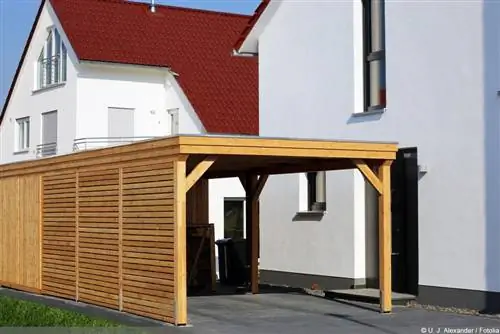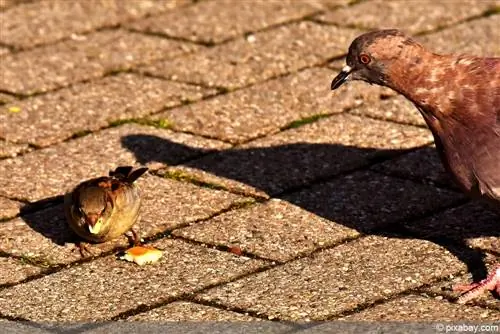- Author admin [email protected].
- Public 2023-12-17 03:39.
- Last modified 2025-01-24 12:45.
A roof garden is always a world of its own. Usually in the middle of a lively, urban life, it is often perceived as a place of retreat - as a piece of nature in the middle of the city. However, for this to actually work, the planting in particular must meet special requirements. In other words: Not every plant is suitable for a roof terrace - especially not if it is sunny.
Special features
The special location means that roof terraces are in most cases always exposed to direct sunlight. It can happen that taller neighboring houses provide shade. However, that should not be the rule. It is also due to the location that a roof is not necessarily a place protected from the wind.
Tip:
In order to cushion the natural draft in a roof garden, certain protective elements such as light privacy walls should be set up.
Finally, it is important to take into account that in a roof garden, plants are often cultivated in large planters. If you want to avoid having to lug the heavy pots down from the roof twice a year and back up again in the spring, you should definitely concentrate on choosing plants that are hardy. The essential winter storage can then take place on site without any problems, and there is no need to tow it. However, a certain amount of protection is usually still required for individual plants. The following selection of plants is therefore exclusively winter-hardy plants.
Flowering plants
Flowers give every roof terrace that certain something in summer. Flowering plants should therefore definitely be taken into account when equipping the roof garden. Basically, all common balcony plants that love sunshine and are of course hardy are suitable for this. These three are particularly suitable for this:
Japanese azalea (Azalea japonica / Rhododendron japonicum)
A flowering, low-growing ornamental shrub that stays green all year round. The flowering time is in April and May. Depending on the species, white, red, pink or orange flowers are produced.
Daylily “Stella de Oro” (Hemerocallis Hybride Stella de Oro)
A type of lily that produces funnel-shaped, rich yellow flowers and can bloom from April to October. It reaches a height of 20 to 40 cm.
Hanging bellflower “Trollkind” (Campanula poscharskyana)
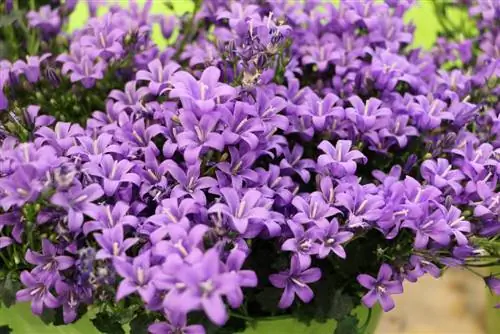
A fascinating species of bluebell that blooms from June to September. The flowers of the plant are blue in color and have a radial shape.
Tip:
If you want variety in your roof garden all year round, you should combine flowering plants that bloom at different times and in different colors.
Most plant flowers are very sensitive to wind. On a roof terrace, the mostly low-growing specimens should always be combined with higher-growing plants. This allows a natural windbreak to be created. Over the winter, it is also recommended to cover the respective flowering plants with fleece, leaves or brushwood.
Grasses
Planting with grasses is ideal for a roof garden. Your big advantage: They can partly function as a privacy screen and as a windbreak. Most grasses are also very decorative and relatively easy to care for. However, in order for them to reach an impressive size, they must be cultivated in large planters - the roots must be able to penetrate relatively deeply into the soil. These grasses make a particularly impressive impression:
Fox red sedge (Carex buchananii)
An almost classic ornamental grass that has a very special appeal thanks to its red-brown color. It grows up to 50 cm high.
Riding grass (Calamagrostis acutiflora)
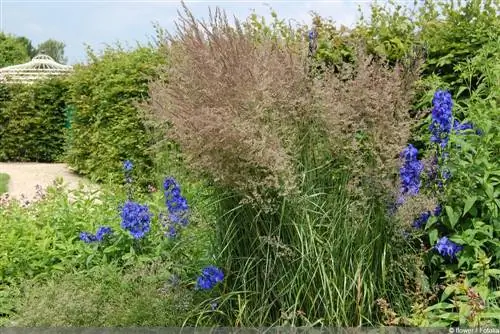
A herbaceous type of grass that grows very densely and strongly branched. Since it can grow up to 1.50 m high, this grass is perfect for privacy and wind protection.
Hedge bamboo (Fargesia robusta)
A bamboo variant that is actually suitable for forming a hedge. It grows extremely quickly, very densely and can reach several meters high.
Practically all types of grass are very undemanding and require little attention. As a rule, they are also extremely robust and can withstand adverse weather conditions.
climbing plants
Climbing plants are also classics when furnishing the roof terrace. They can be planted either on walls or on special climbing aids. Climbing plants are particularly suitable for giving the roof garden a truly green touch. Equipped with a trellis, they can also be used as a boundary or privacy screen. However, if they are planted on walls, it should be noted that they can sometimes cause considerable damage to the masonry. If you do not own the building yourself, you must always obtain the landlord's permission before planting climbing plants on a wall. You can't go wrong with these climbing plants on the roof terrace:
Ivy (Hedera Helix)
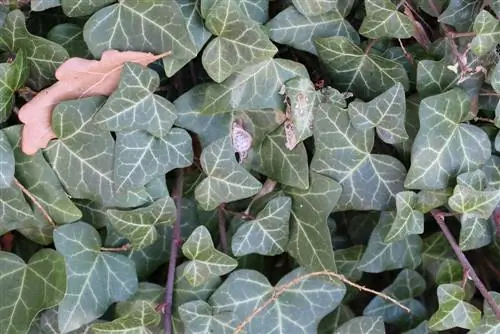
Next to wild vine, ivy is, to a certain extent, the classic climbing plant. If it is planted directly on a wall, there is a high probability that significant damage to the masonry will occur.
Evergreen honeysuckle (Lonicera henryi)
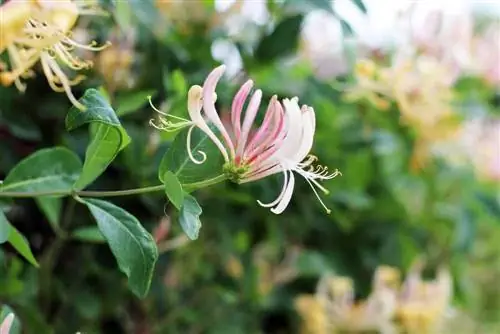
This climbing plant, however, does not cause any damage to walls and is therefore perfect when it comes to adding greenery to unsightly walls on or in the roof garden.
Climbing hydrangea (Hydrangea petiolaris)
The climbing hydrangea should not necessarily be planted on a wall, but rather on a climbing aid. Plus, it's not green all year round.
Wild vine (Vitis vinifera subsp. sylvestris)
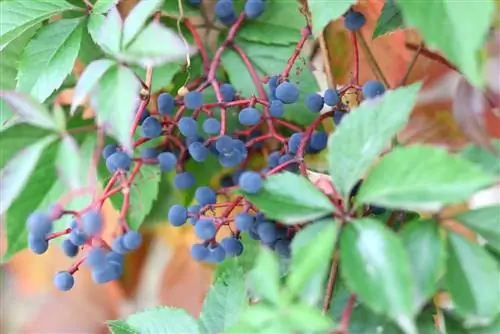
The wild vine is undoubtedly one of the most popular climbing plants. It can be particularly magnificent and lush in summer and autumn. However, when using it on the roof terrace, you should take a close look at which species is being planted. Because: Most species are hardy, but not all.
Climbing plants may need to be pruned regularly. Depending on your taste, you should simply let them grow wild.
Note:
Climbing plants should not be allowed to grow downward over the edge of the building from the roof garden. This can lead to significant problems on the house wall.
Woods
Woods are also almost perfect for a roof garden. In general, they are very easy to care for and have enormous resistance. However, you should be careful: some species are poisonous and should therefore be treated with caution. Typically, trees are cultivated on the roof terrace in a large planter. The following species are particularly suitable for this:
Barberry (Berberis vulgaris)

A tried and tested shrub with thorns that tolerates a sunny to semi-shaded location well. It grows up to three meters tall and blooms from May to June.
Yew (Taxus baccata)
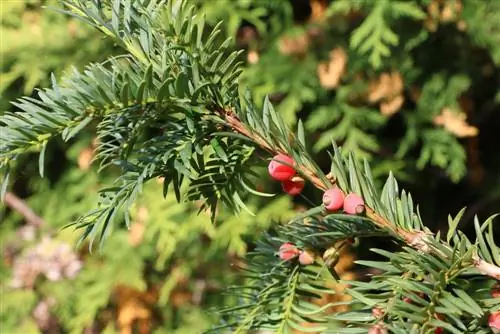
An evergreen plant that occurs either as a shrub or as a small to medium-sized tree. The yew is very poisonous. The poison Taxin B., which it contains, is particularly problematic.
Thuja (Thuja)
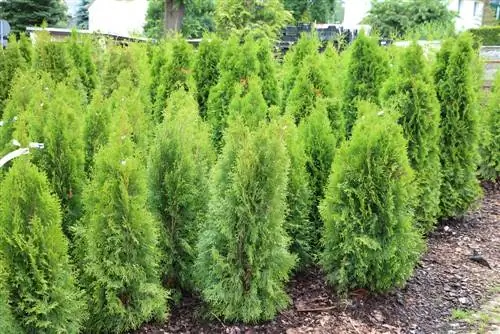
An evergreen shrub or small tree that is perfect for creating hedges. An effective privacy screen can be created relatively quickly from several Thuja plants cultivated next to each other.
More plants
There are a whole range of other plants that can be used to decorate a roof garden. For example, there are various types of herbs, many of which are also hardy. IN summer you can of course also grow vegetables on the roof. However, if you prefer fruit, you should think about setting up a dwarf version of a fruit tree. These are now available from almost every type of fruit tree. Most of them are also suitable for container planting. However, it is important that the respective breed is actually winter hardy. This must definitely be taken into account before purchasing. You should also be aware that such a miniature fruit tree in a pot can be very heavy. Transport is often no longer possible.

